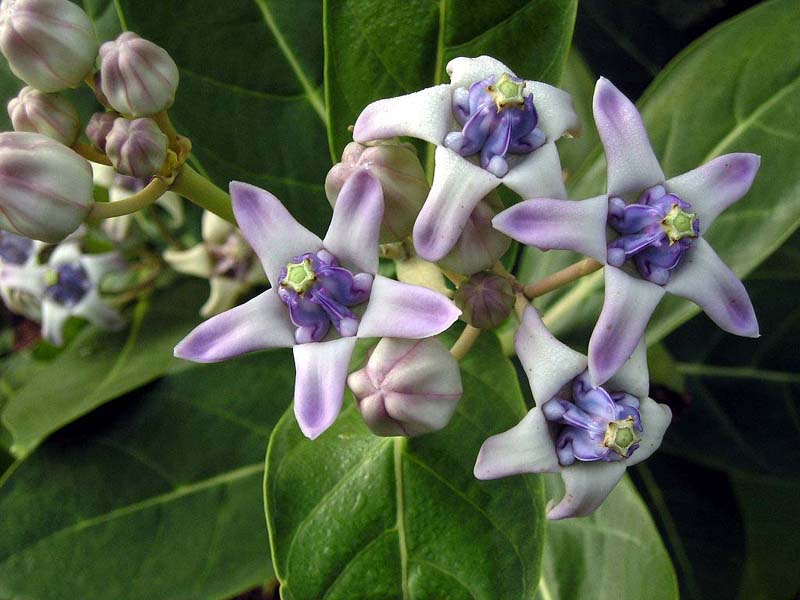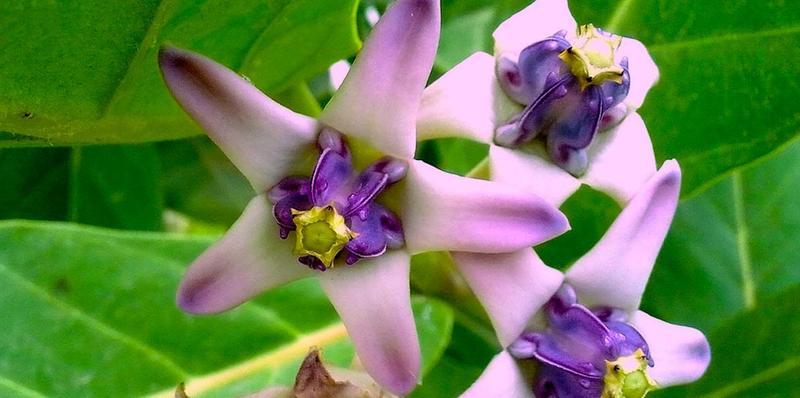Thai Research Team Discovers This Plant Can Stop Cancer from Growing
Thai Research Team Discovers This Plant Can Stop Cancer from Growing
A research team of Naraesuan University has successfully extracted chemicals from the latex of Rak plant (Calotropis Gigantea) which are capable of inhibiting the function of a protein which is essential for the growth of cancerous cells, said Dr Supawadee Pahera, a lecturer at the faculty of pharmacy of the university.
She added that the chemicals were found to be capable of resisting H1N1 flu virus in the early stage of infection and stopping enzyme which causes tissue inflammation.
Dr Supawadee said that this research work would pave the way for the search of new medicines for the treatment of certain ailments.

The research work has been patented and also published in three international academic publications, she said, adding that the university recently signed an MOU for research cooperation with Macau University of Science and Technology in search of an anti-cancer medicine and anti-flu virus.
The research work on latex of the Rak plant has won the Macau Scientific and Technological R&D Post-graduates Award 2016.
Calotropis Gigantea (Rak plant)

Calotropis Gigantia has many names and is highly poisonous, although it is also beneficial for our health. It has other benefits for us too. It is native to the Indian subcontinent but grows wild in other countries too, including the Middle East and West Africa, the US and Europe. It is both poisonous and a health giver in much the same way as digitalis. It grows prolifically in Pakistan and has been used in traditional medicine for centuries.
Calotropis Gigantia is used as a traditional medicinal plant since ancient times with unique properties. Traditionally Calotropis is used with other medicinal or alone to treat common disease such as rheumatism, asthma, elephantiasis, fevers, diarrhea, indigestion, cough, cold, eczema, nausea, and vomiting. In India, it is also used to treat snake bites.
In India it was used in Vedic times in religious ceremonies, and the plant was considered sacred. The leaves were used in sun-worshipping rites, as it seems they were among ancient nomadic Arab tribes. Perhaps it was held sacred because it has the power of giving both life and death. It was mentioned in Vedic medical texts dating back to 1500BC.
The Latex from Calotropis Gigantia is Considered Dangerous in Pakistan
In Pakistan it is said that the latex from the aak plant as it is known in Urdu, causes instant blindness. It is also used by some suicides, and is believed to have been used in infanticide, as well as by women to induce abortions. It is now known to contain the glycosides, calotopin, uscharin and calotoxin, aluminium, iron, calcium, magnesium and carbohydrates, among other substances.
Calotropis Gigantia has Healing Properties Used in Ayurvedic Medicine
The parts of the plant used in medicine are the leaves, fresh or dried, the roots and root bark, and the flowers.
The powdered leaves are used for the fast healing of wounds, as a purgative and to improve indigestion. They are also used to treat skin disorders and liver problems.
Dried leaves are used to promote sexual health including penile dysfunctions and are reputed to be an aphrodisiac.
Hot poultices are made from the leaves and applied to the stomach to relieve pain, to stop headaches and applied to sprains to ease the swelling and pain.
The flowers are used as a drink in milk to cure a variety of complaints including coughs and catarrh, asthma and indigestion, as well as cholera. They are collected from September to February and can apparently be used to treat piles when a paste is made from them.
The bark of the root is used to cure dysentery and skin diseases. It is a very useful plant for herbalists on the subcontinent, especially as it is so readily available.
Modern Medical Research is Still Underway
So far research has shown that Calotropis Gigantia has the “significant potential” to be used in anti cancer treatments in the nose and throat; as an anticoagulant and is a proven anti-inflammatory. It has also been proven to have anti-fungal properties and can be used effectively in fungal diseases of the skin such as athlete’s foot and ringworm. Research on the plant is ongoing.
Other Uses of Calotropis Gigantia
Be the first to post a message!
